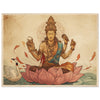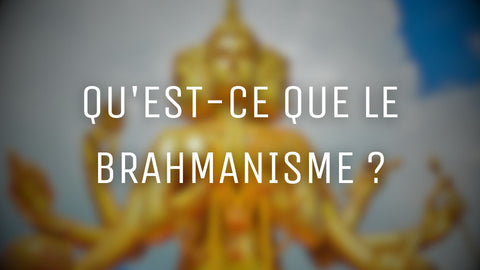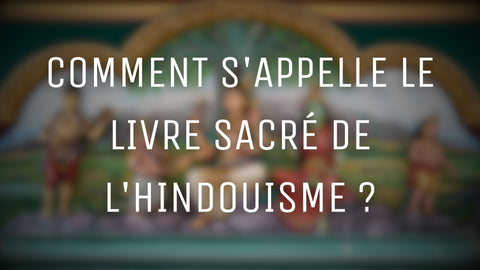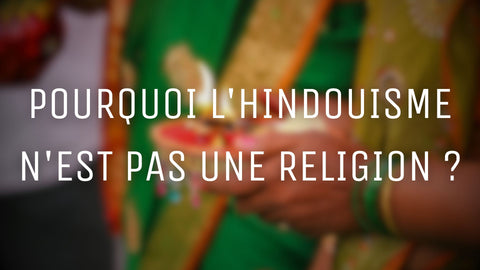
Why pray for Vishnu?
of reading
Vishnu (or Vishnu or Vishnu) is not only the God of world stability, but also the God of life and creation. He is the God of time.
Brahman is his birthright. We often see him dozing off. But when he fell asleep, he was preparing for the next world. They all have similar homework. His wife is lakmi (light). His second wife was Pumi, also known as land. He is the Savior and defender of mankind and cannot act directly under such circumstances; More like an avatar.
1) The origin of Vishnu?
Vishnu, along with Brahma and Shiva, is considered a member of the Hindu holy trinity. He is the main god of India's most popular sect, waishinawi. According to some legends, Brahma was formed from a lotus, which grew in Vishnu's navy and rose from the navel.
Vishnu is the patron saint and guardian of mankind (Narayana), responsible for maintaining the order of things (Dharma). When necessary, Vishnu comes to the earth in various incarnations or avatars to fight against demons and violent monsters in order to maintain the balance of the universe. Vishnu married Lakshmi (goddess of good luck), salawati (goddess of wisdom) and Ganga (incarnation goddess of Ganges).
However, Vishnu was tired of the quarrel between his three wives, so he sent the Ganges to Shiva and salawati to Brahma. Vishnu is said to have a fourth wife named Bumi Devi (Earth Goddess). He lives in wakunta on Mount Meru in heaven, where everything is made of glittering gold and gemstones. Wakunta, where he lives, has a glittering lotus lake.

2) How does Vishnu represent?
This sentence says: "Vishnu master is the persistent and nourishing side of the supreme reality. Vishnu's typical representative is a human body with four arms, and his four hands represent his omnipresence and omnipotence.
His two positive forearms represent his participation in the material field, while his two negative rear arms represent his work in the spiritual field, "but I am looking for a deeper meaning, I want to share with you. According to Rishi Kumar Sharma in his book the ultimate dialogue, the Sanskrit term Mahima means "the dignity, greatness or majesty of a person", and "individual" refers to each entity with unique identity in the universe, such as name, form and function.
Technically, Mahima means radiation from each entity. 360 degree radiation can be divided into four 90 degree quadrants.
This spherical radiation surrounds the whole universe, and each quadrant is called "svastika", Vishnu master, support, is depicted as four arms, because all manifestations are the origin of the divine and stored in the divine.
There are also many green figures on his clothes. In addition, people often see him wearing a natural stone bracelet on his arm. These four arms represent the four-dimensional space-time Kingdom, in which all divine manifestations have taken place, as well as the space-time structure itself, which is an implicit order and creates a supporting potential for things that have not yet appeared.
Svastika shows similar characteristics in four different perspectives. They all have a common origin. They remain unchanged regardless of the emission plane of the four quadrants. Svastika has 90 degree rotational symmetry, which refers to the periodicity of God's activities.

3) The significance of Vishnu in the Buddhist world
Like other major gods, Vishnu is related to many colorful stories that illustrate Vishnu's quality as a protector of the cosmic order. After hiranyaksha maliciously moved the land (bhumi Devi) to the bottom of the sea, the huge boar varaha defeated the huge daitya. Vishnu defeated his opponent in an incredible battle for a thousand years, and finally lifted Gaia from the deep sea to the shield. Vishnu reportedly gave immortal gifts to all other gods in baghavata Purana.
According to legend, God wanted to stir the sea of milk, make it amrita nectar (amrita), and give its drinkers eternal life. In order to stir the ocean, they decided to use Mandala mountain and wasuki (or Ananta) as rotating ropes; One is led by the devil and the other by the God. However, both groups could not bear such a burden and asked Vishnu for help. He did this in the shape of a huge tortoise, Kurma, which supported the mountain with its shell.
Nectar is made of sea foam, but demons, as they know, try to steal it. Vishnu saved them in the form of a beautiful Maya (the embodiment of illusion). She succeeded in diverting the devil's attention from their cost and allowing the gods to live forever.

4) What does Vishnu symbolize
A. Vishnu image
Unlike the eagle shaped Garuda, which is related to the worship of air and the sun, matsya represents Vishnu in the form of water. One day, vivsavat sun's son manu was bathing in the river when a small fish jumped into his hand. He had planned to throw it into the water, but it was stopped by the fish's protest. The fish was afraid that the monster would eat it. So manu put the fish in a small bowl for the night, but when it grew big enough, he put it in a jar. However, when the fish continued to grow, Manu threw it into a lake.
As you may remember, Manu was trapped by a huge fish and thrown into the sea. However, the fish continued to grow and was so big that manu had to throw it into the water. The fish predicted that there would be a big flood in seven days, but manu didn't have to worry, because the fish would give him a big boat so that he could escape safely.
The fish asked manu to fill the boat with a pair of all the creatures in the world and the seeds of all the plants, and then tied it to the boat with a huge snake vasuki.
As the fish predicted, the water rose slowly and steadily, flooding the land. Vishnu came back again. He was a huge goldfish, with a horn, carrying the ship promised by manu, and then came back. The sage soon followed his footsteps and became the ovipositor who survived the flood with his huge animal library.
The three incarnations of Vishnu appear in the first stage of creation, or the world cycle. As the cycle of each breath of God, they participate in the initial stage of karpa. The next step is to fight between demons and humans to rule the world. Vishnu then played the hero Rama, who experienced many adventures in the battle with the lakshasa, while the monks fought with the Kshatriya with a parasurama axe.

B. Vishnu's existence
The Legend of the Three Steps is one of the most famous tales on the gods of this second world. The giants took the upper hand in the conflict between the gods and the deities for control of the globe. Vishnu, however, was persuaded by the gods to resume his meditation and confront Bali in the form of a dwarf Brahmin (or priest) called Vamana.
Vishnu proposed a compromise: the gods would accept a tiny territory covered by three of the Vamana's steps, and the giants could have the rest of the cosmos if the fighting ceased. This seemed to be a good deal because of the small legs of Bali, which therefore accepted. However, Vishnu was in reality a great god and his first step, he cleansed the sky, his second step was towards the Earth, and his last step was towards Hades, leaving nothing to the poor giants. This is why Vishnu is often called Trivikrama, which means "from three steps"
The sun also plays a role in the myth. It can symbolize the sunrise, the zenith and the sunset, which are known as the three solar movements. Surya Narayana was one of Vishnu's names, implying that he was associated with the sun. When Hiranya-Kasipu (the King of Asuras or Demons) imprudently demanded that people worship him as a god and defied Vishnu to appear immediately if he was truly omnipresent, Vishnu appeared in the form of Nara-Simha, the lion-man, to warn the infidels.
It lives in Vishnu in the form of a lion, tearing apart the unbeliever of its claws and making its entrails a macabre necklace.
In the third age, during the Kalpa, the Lord Vishnu took the form of Buddha and Krishna, two remarkable personalities in their own right. After her mother Devaki was afraid that Kamsa, the uncle of her eighth child, would kill her as a prophecy, Krishna or "the black prince" was raised by the trees in the woods.
The young Krishna was raised by the shepherd Nanda and his wife, and he had already shown his divine capabilities by carrying out remarkable physical exploits and killing many demons and monsters. He was also, unsurprisingly, greatly admired by the ladies of the forest. His beautiful existence came to a violent end when his mother beat him with a curse for not having helped in the formidable conflict between the Kurus and Pandus families.
That was his fate: he died at the age of 64, after visiting here to devote himself to the quest for enlightenment. It is claimed that as a result of this terrible calamity, the sun also went with it.

5) Vishnu and mythology
The Milky Ocean Barattage is a Hindu epic poem that tells one of the last battles between gods and demons. Vishnu advised the other divinities to beard the whey sea in order to recover a number of lost valuables, including the elixir of immortality and Lakshmi, the goddess of success and wealth. These two objects would allow the gods to defeat their enemies who had taken control of the world.
Vishnu, knowing that the gods would be unable to barp the huge ocean to them alone, concludes a market with demons. He informed them that if they helped to baratter the ocean, they would receive some of the riches, including eternal life. They agreed. Vishnu advised the gods and demons to use Mount Madura as a barking stick and Vasuki as a rope. As the demons clung to the head of the snake, which spewed quickly, Indra clung to its tail.
The hill was enveloped by the snake. The mountain turned into the water when each side was pulling on the rope and then releasing it, which made it turn. They encountered many difficulties before they could recover the wealth. As the gods and demons clashed, the mountain was sinking into the sandy bed of the sea. Vishnu incarnated as a tortoise at the request of God.
He erected a mountain on his back to serve as a foundation, allowing the barattage to continue. Some say that he was barattered for a thousand years before something happened. The demons rushed to capture the elixir of immortality when it appeared. Vishnu took the form of Mohini, a beautiful woman who captivated all demons with her beauty, and took them out of the elixir of immortality.
It turned the elixir into alcohol by a pass-pass, making the thing priceless to the gods. The barattage also made Lakshmi out of the sea. She appeared as a beautiful woman standing on a lotus flower, the body hardened with beads. Shiva won his heart because she thought he deserved it. Since then, she and Vishnu have been inseparable.

6) The link between Art and Vishnu
Vishnu is represented in many different ways in many countries, cultures and traditions-Indian, Cambodian, Javanese, etc. -but it is most often depicted in blue and overlaps Garuda, a huge midman beast, half bird that devour the snakes.
Shiva's companion is Parvati, who was born from the left thigh of Shiva. Its vehicle is the Airavata, which has seven floors and can carry 1,000 people. He often falls asleep on Sesha (or Ananta), the seven-headed serpent of the god who serves as a four-poster child. Sudarsanacakra or disc (chakra) can symbolize both its connection with the sun and its thousand rays, which represent the wheel of time.
It usually has four hands, holding a trumpet in the shape of a shell of conch that creates the sound, a mass (gada) or a sword that symbolizes power, and a lotus, which represents the freedom and beauty of life.


















